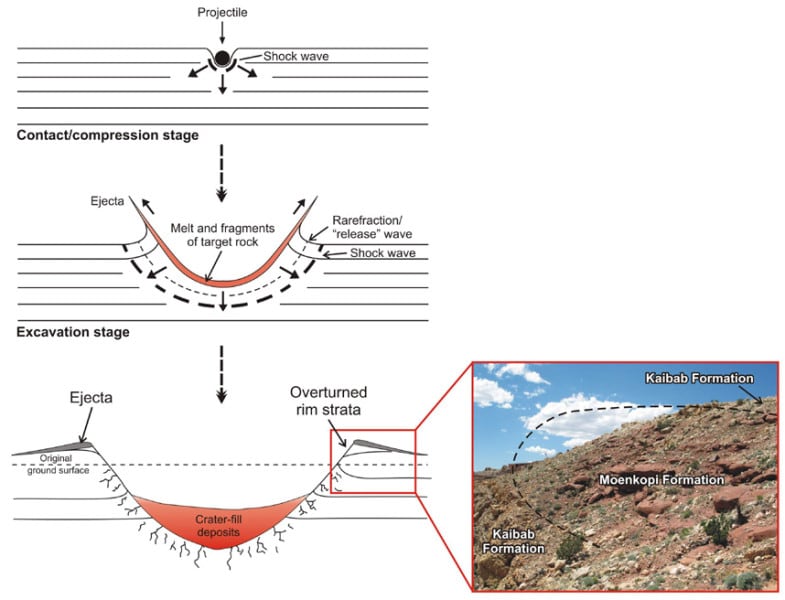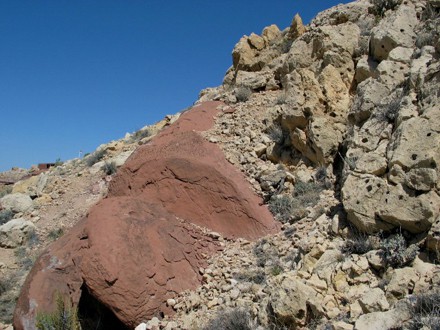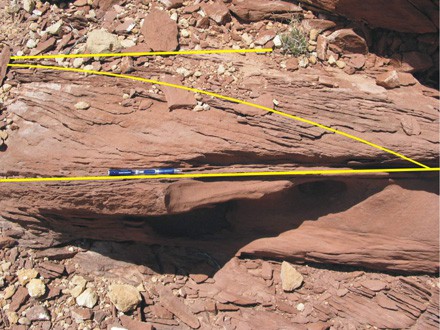
Barringer Diagram: This is one of the best locations at Barringer Crater to study the “overturned rim”, which is one of the most characteristic features of simple impact craters. This demonstrates the immense energy of meteorite impact events. Here at Barringer Crater the uppermost layers of rock were uplifted, peeled back and thrown outwards, so that the rocks on top are now upside down – see the diagram below.
| Overturned Layers of Rock Photo: G. Osinski, University of Western Ontario Location: Northeast corner of the impact crater along the east rim trail So how do we know that the rocks on top are now upside down? Let’s take a close look at the image above. Here we can see the yellow-brown Kaibab Formation on top of the brick red Moenkopi Formation. This is not the way it should be: The Moenkopi rocks are younger than the Kaibab rocks so that before the impact, the Moenkopi was on top. |  |
| Crossbedding in the Moenkopi Formation Photo: G. Osinski, University of Western Ontario Location: Northeast corner of the impact crater along the east rim trail Scale: Pen length is approximately 15 centimeters The second way we can tell if a layer of rock is upside down is to look at the geometry of the “crossbedding” or “cross-stratification”. These curved sets of small-scale layers are the relics of ancient dunes and ripples in sandstones and other sedimentary rocks (see the image above). In the Moenkopi Formation, the top of each crossbed is truncated by a steeper angle at the top than at the bottom. With this in mind, look at the photo again. Can you see that the angle made by the crossbeds at the bottom is greater than at the top? This indicates that this layer of rock is upside down. |  |
